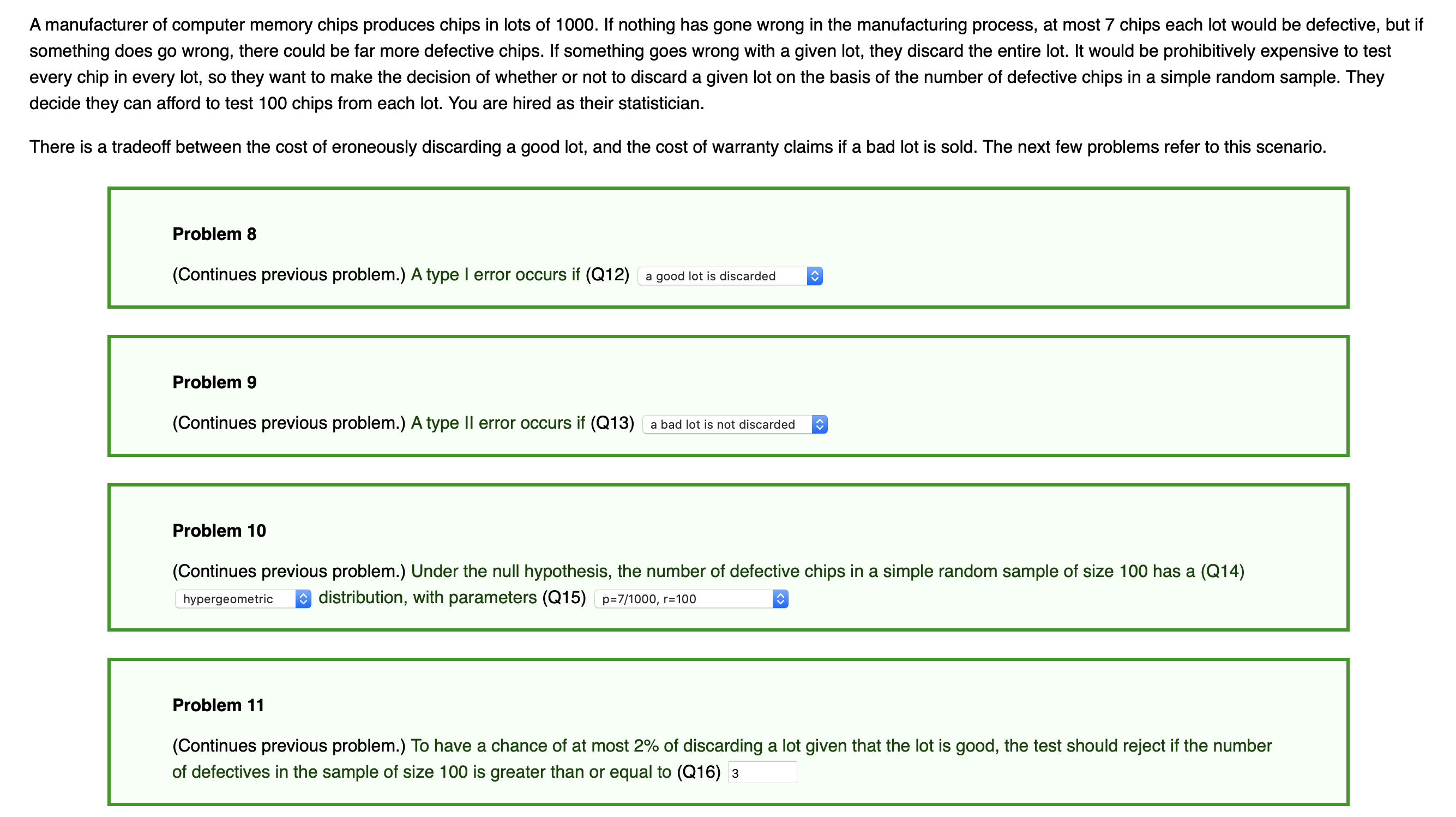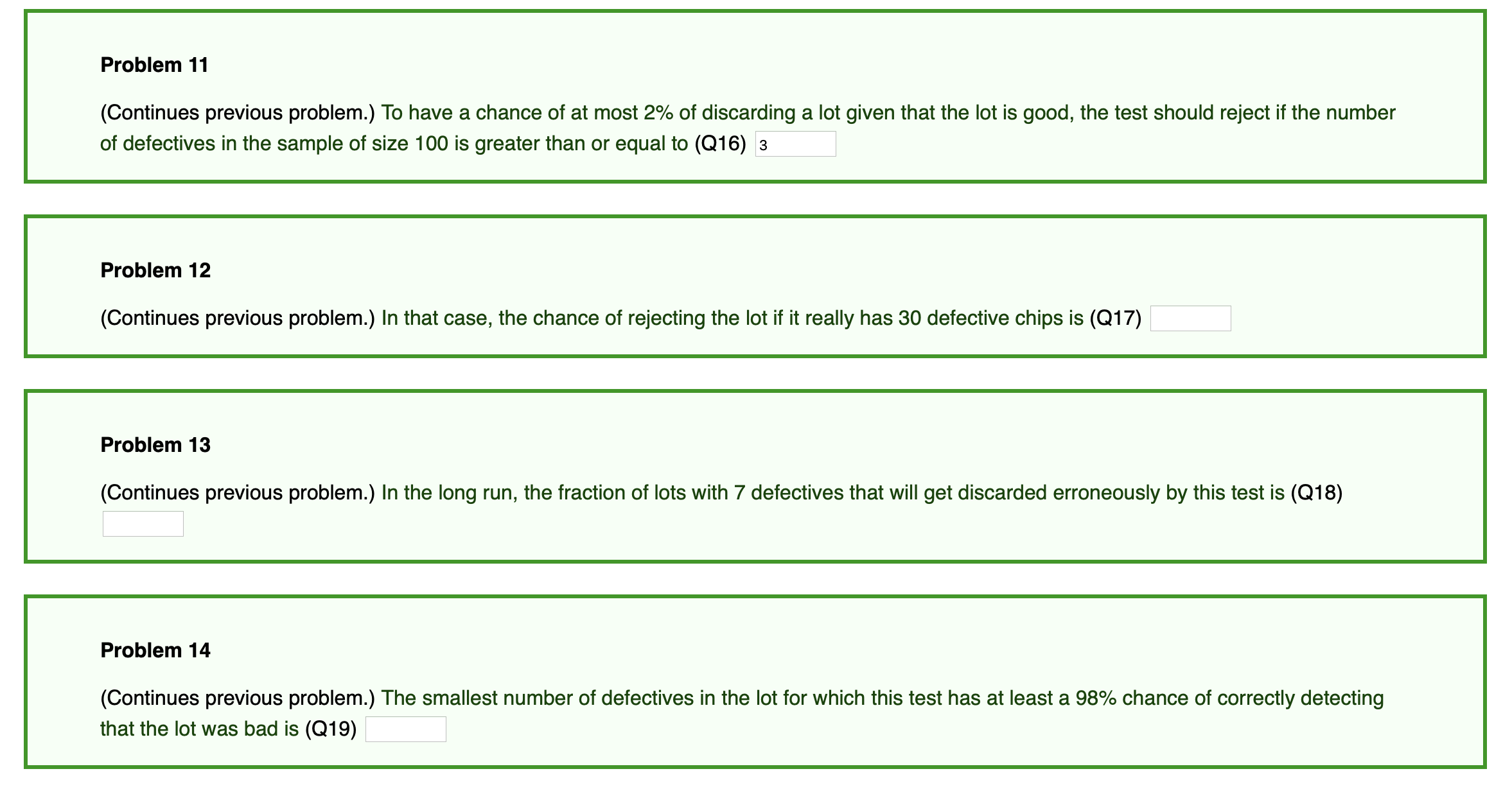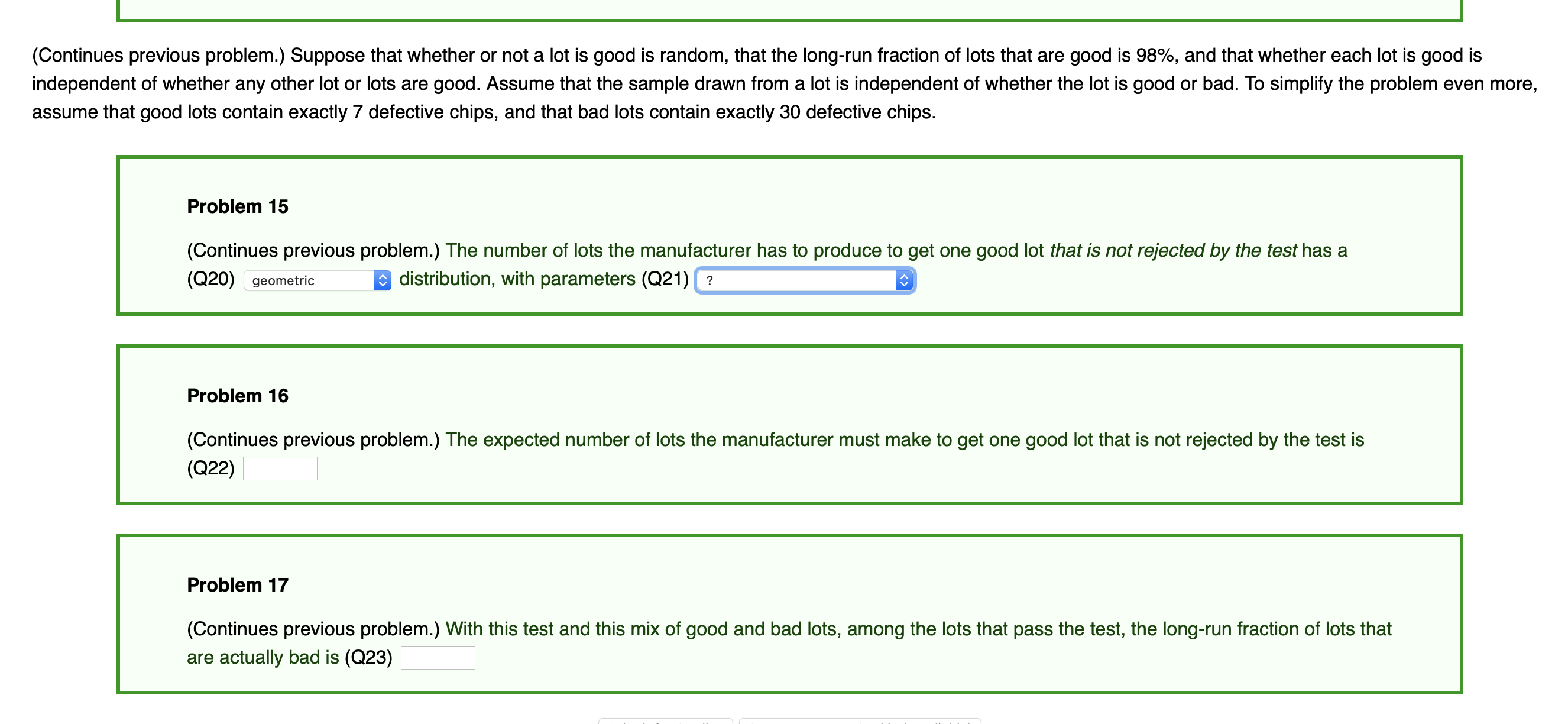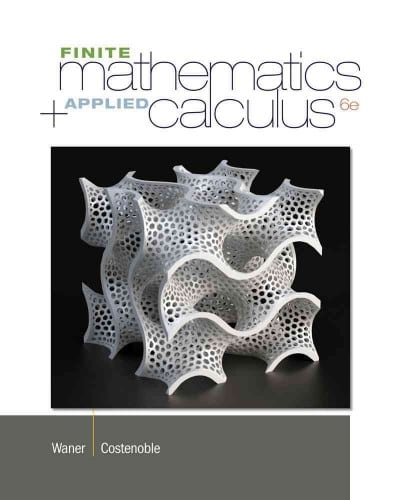A manufacturer of computer memory chips produces chips in lots of 1000. If nothing has gone wrong in the manufacturing process, at most 7 chips each lot would be defective. but if something does go wrong, there could be far more defective chips. If something goes wrong with a given lot, they discard the entire lot. It would be prohibitively expensive to test every chip in every lot, so they want to make the decision of whether or not to discard a given lot on the basis of the number of defective chips in a simple random sample. They decide they can afford to test 100 chips from each lot. You are hired as their statistician. There is a tradeoff between the cost of eroneously discarding a good lot, and the cost of warranty claims if a bad lot is sold. The next few problems refer to this scenario. Problem 8 (Continues previous problem.) Atype I error occurs if (Q12) a good lot is discarded a Problem 9 (Continues previous problem.) A type II error occurs if (013) a bad lot is not discarded Problem 10 (Continues previous problem.) Under the null hypothesis, the number of defective chips in a simple random sample of size 100 has a (Q14) hypergeometric a distribution, With parameters (Q15) p=7/1000, r=100 a Problem 11 (Continues previous problem.) To have a chance of at most 2% of discarding a lot given that the lot is good, the test should reject if the number of defectives in the sample of size 100 is greater than or equal to (Q16) 3 Problem 11 (Continues previous problem.) To have a chance of at most 2% of discarding a lot given that the lot is good, the test should reject it the number of defectives in the sample of size 100 is greater than or equal to (Q16) 3 Problem 12 (Continues previous problem.) In that case, the chance of rejecting the lot if it really has 30 defective chips is (017) Problem 13 (Continues previous problem.) In the long run, the fraction of lots with 7 defectives that will get discarded erroneously by this test is (Q18) Problem 14 (Continues previous problem.) The smallest number of defectives in the lot for which this test has at least a 98% chance of correctly detecting that the lot was bad is (019) Il (Continues previous problem.) Suppose that whether or not a lot is good is random, that the long-run fraction of lots that are good is 98%, and that whether each lot is good is independent of whether any other lot or lots are good. Assume that the sample drawn from a lot is independent of whether the lot is good or bad. To simplify the problem even more, assume that good lots contain exactly 7 defective chips, and that bad lots contain exactly 30 defective chips. Problem 15 (Continues previous problem.) The number of lots the manufacturer has to produce to get one good lot that is not rejected by the test has a (Q20) geometric distribution, with parameters (021) Problem 16 (Continues previous problem.) The expected number of lots the manufacturer must make to get one good lot that is not rejected by the test is (Q22) Problem 17 (Continues previous problem.) With this test and this mix of good and bad lots, among the lots that pass the test, the long-run fraction of lots that are actually bad is (Q23)









